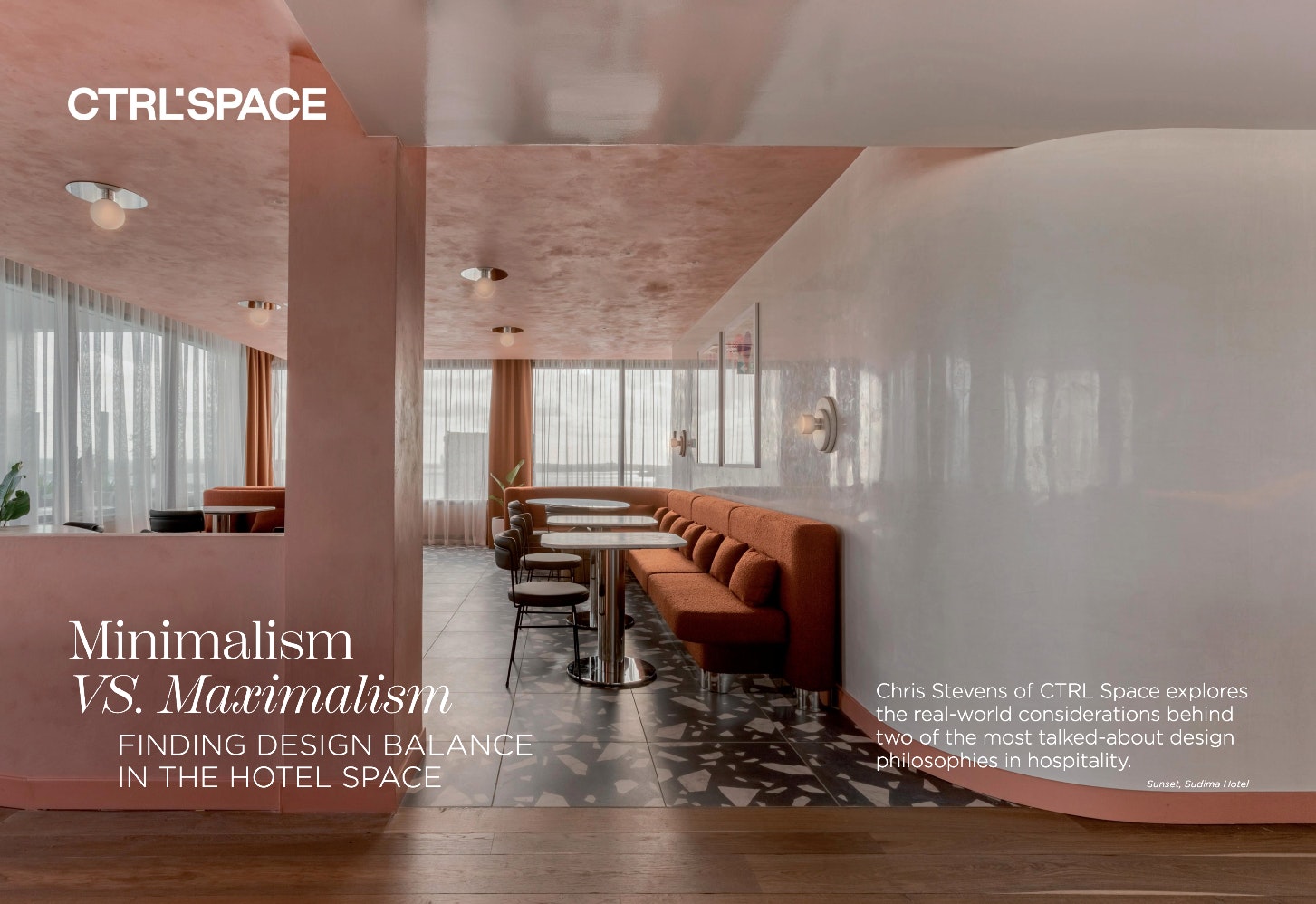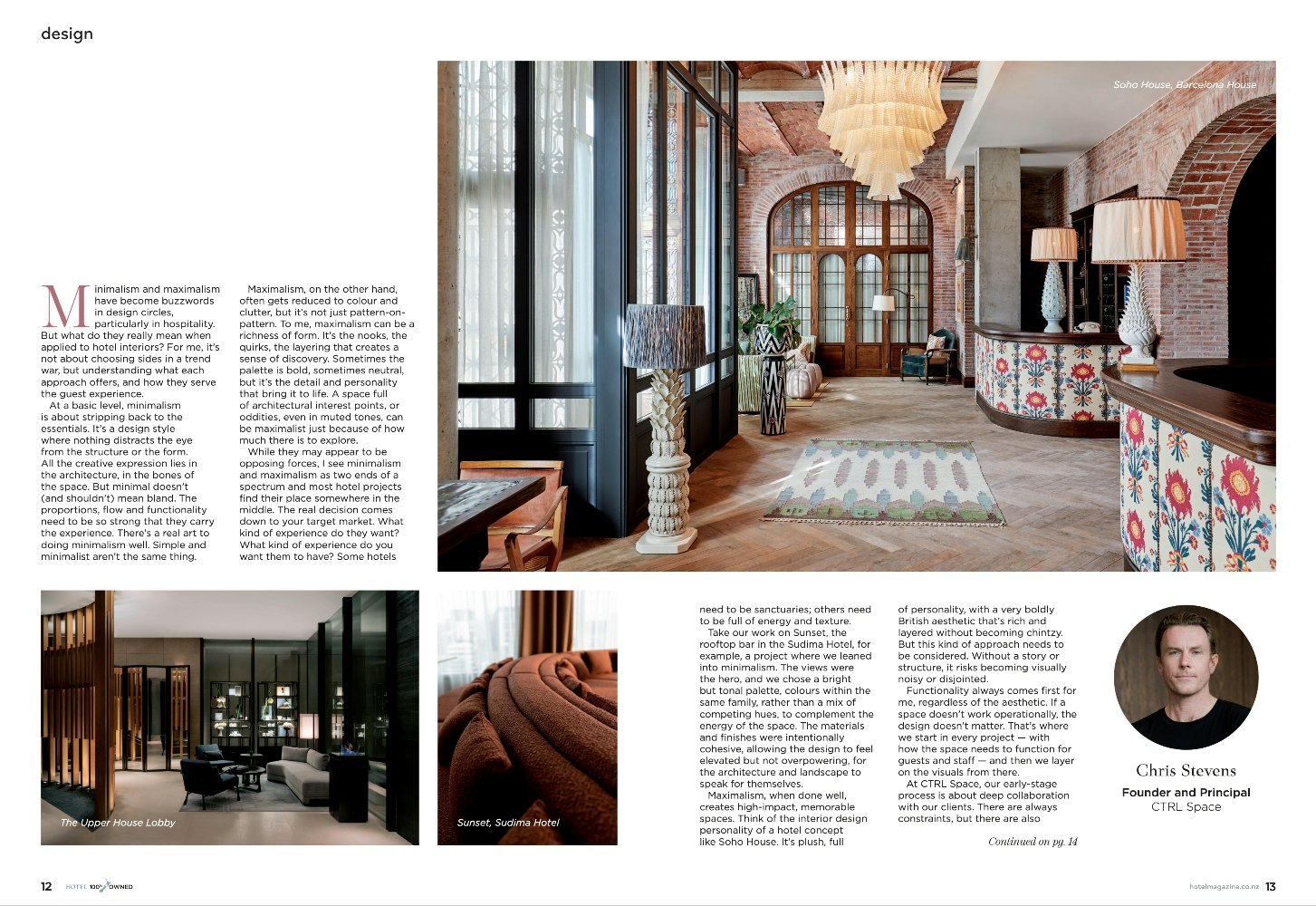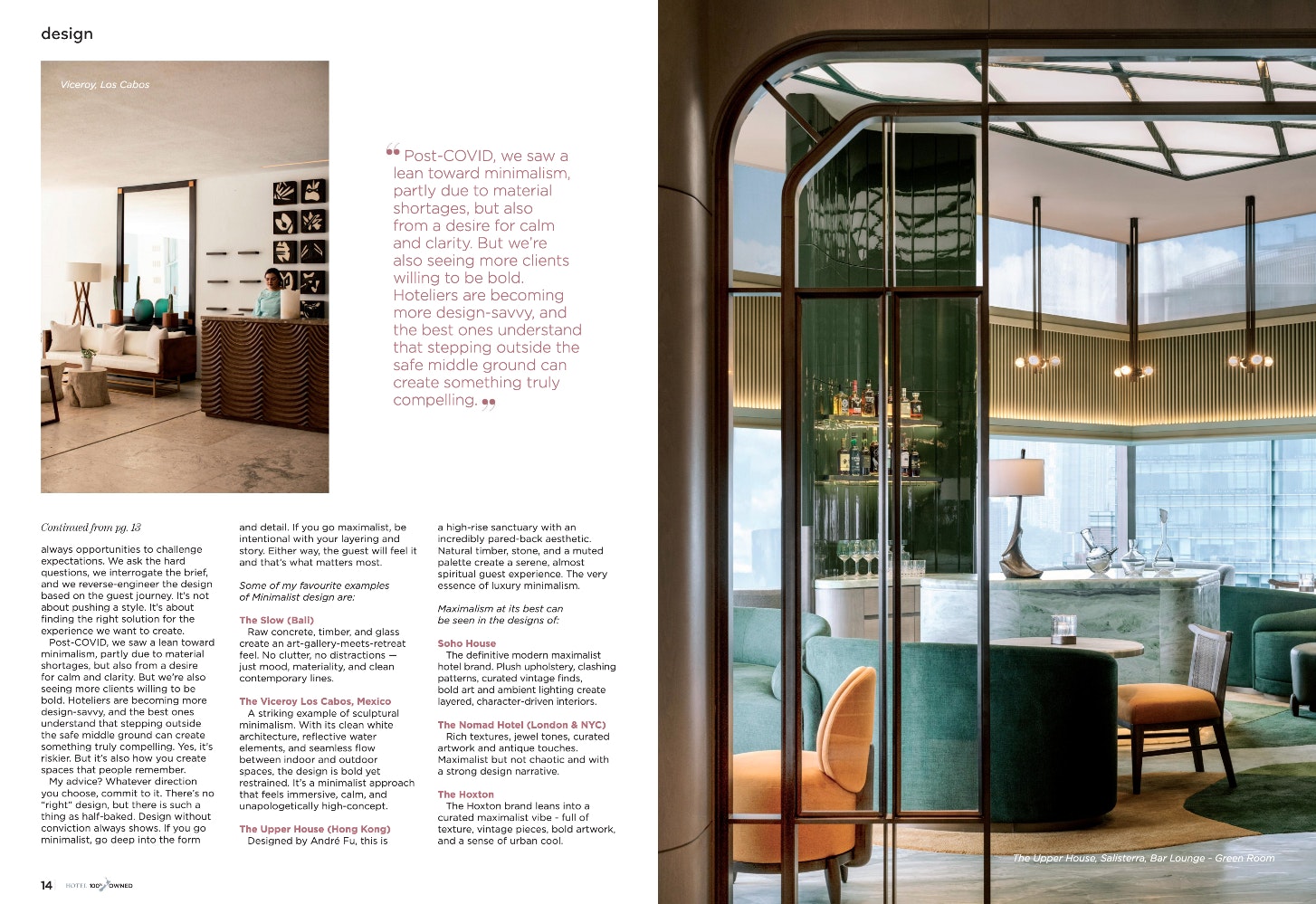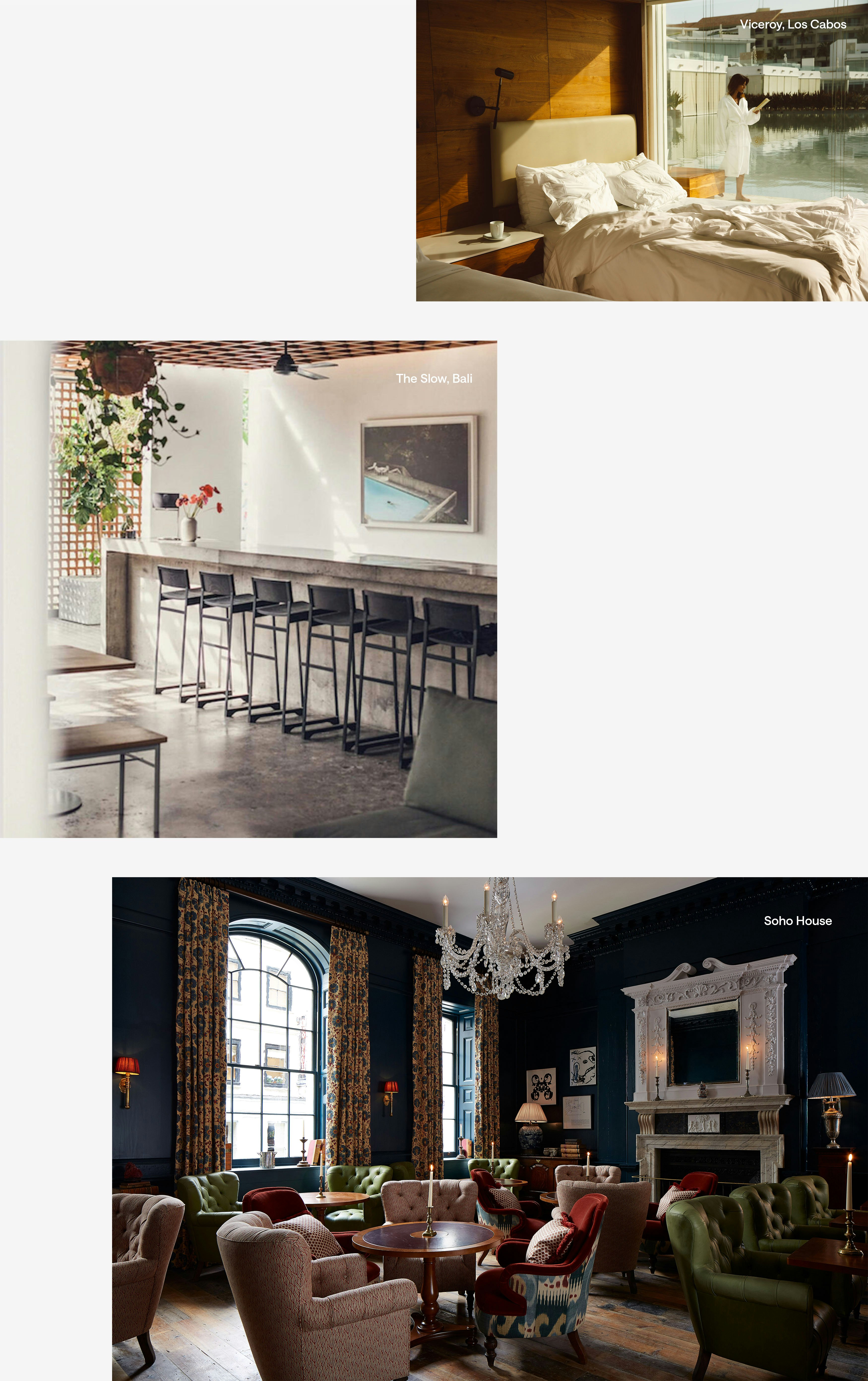For me, it's not about choosing sides in a trend war, but understanding what each approach offers, and how they serve the guest experience.
At a basic level, minimalism is about stripping back to the essentials. It's a design style where nothing distracts the eye from the structure or the form. All the creative expression lies in the architecture, in the bones of the space. But minimal doesn't (and shouldn't) mean bland. The proportions, flow and functionality need to be so strong that they carry the experience. There's a real art to doing minimalism well. Simple and minimalist aren't the same thing.
Maximalism, on the other hand, often gets reduced to colour and clutter, but it's not just pattern-on- pattern. To me, maximalism can be a richness of form. It's the nooks, the quirks, the layering that creates a sense of discovery. Sometimes the palette is bold, sometimes neutral, but it's the detail and personality that bring it to life. A space full of architectural interest points, or oddities, even in muted tones, can be maximalist just because of how much there is to explore.
While they may appear to be opposing forces, I see minimalism and maximalism as two ends of a spectrum and most hotel projects find their place somewhere in the middle. The real decision comes down to your target market. What kind of experience do they want? What kind of experience do you want them to have? Some hotels need to be sanctuaries; others need to be full of energy and texture. Take our work on Sunset, the rooftop bar in the Sudima Hotel, for example, a project where we leaned into minimalism. The views were the hero, and we chose a bright but tonal palette, colours within the same family, rather than a mix of competing hues, to complement the energy of the space. The materials and finishes were intentionally cohesive, allowing the design to feel elevated but not overpowering, for the architecture and landscape to speak for themselves.
Maximalism, when done well, creates high-impact, memorable spaces. Think of the interior design personality of a hotel concept like Soho House. It's plush, full of personality, with a very boldly British aesthetic that's rich and layered without becoming chintzy. But this kind of approach needs to be considered. Without a story or structure, it risks becoming visually noisy or disjointed.
Functionality always comes first for me, regardless of the aesthetic. If a space doesn't work operationally, the design doesn't matter. That's where we start in every project - with how the space needs to function for guests and staff and then we layer on the visuals from there.
At CTRL Space, our early-stage process is about deep collaboration with our clients. There are always constraints, but there are also always opportunities to challenge expectations. We ask the hard questions, we interrogate the brief, and we reverse-engineer the design based on the guest journey. It's not about pushing a style. It's about finding the right solution for the experience we want to create.
Post-COVID, we saw a lean toward minimalism, partly due to material shortages, but also from a desire for calm and clarity. But we're also seeing more clients willing to be bold. Hoteliers are becoming more design-savvy, and the best ones understand that stepping outside the safe middle ground can create something truly compelling. Yes, it's riskier. But it's also how you create spaces that people remember.
My advice? Whatever direction you choose, commit to it. There's no "right" design, but there is such a thing as half-baked. Design without conviction always shows. If you go minimalist, go deep into the form and detail. If you go maximalist, be intentional with your layering and story. Either way, the guest will feel it and that's what matters most.
Some of my favourite examples of Minimalist design are:
The Slow (Bali)
Raw concrete, timber, and glass create an art-gallery-meets-retreat feel. No clutter, no distractions - just mood, materiality, and clean contemporary lines.
The Viceroy Los Cabos, Mexico
A striking example of sculptural minimalism. With its clean white architecture, reflective water elements, and seamless flow between indoor and outdoor spaces, the design bold yet restrained. It's a minimalist approach that feels immersive, calm, and unapologetically high-concept.
The Upper House (Hong Kong)
Designed by André Fu, this is a high-rise sanctuary with an incredibly pared-back aesthetic. Natural timber, stone, and a muted palette create a serene, almost spiritual guest experience. The very essence of luxury minimalism.
Maximalism at its best can be seen in the designs of:
Soho House
The definitive modern maximalist hotel brand. Plush upholstery, clashing patterns, curated vintage finds, bold art and ambient lighting create layered, character-driven interiors.
The Nomad Hotel (London & NYC)
Rich textures, jewel tones, curated artwork and antique touches. Maximalist but not chaotic and with a strong design narrative.
The Hoxton
The Hoxton brand leans into a curated maximalist vibe full of texture, vintage pieces, bold artwork, and a sense of urban cool.



